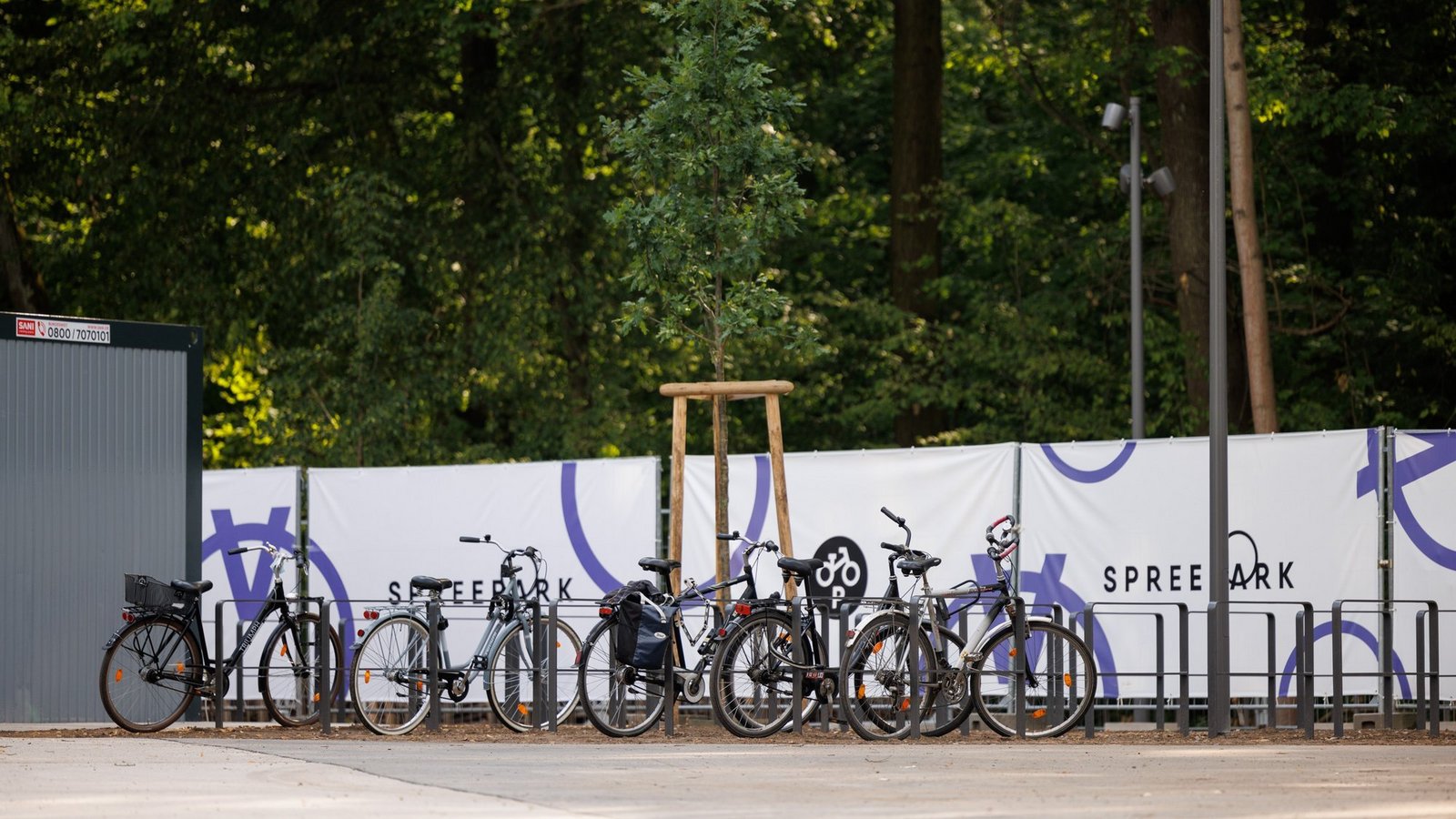Concept & Planning
Mobility
A sustainable transport concept for Spreepark
The Spreepark is located in the Plänterwald landscape conservation area and is a special place of unique urban nature. As part of the comprehensive, excellent sustainability approach, an environmentally friendly mobility concept plays an important role in its transformation. In the future, the Spreepark should be quickly and comfortably accessible for all visitors without a car. An improved connection to public transport is just as much a part of the mobility concept as innovative mobility solutions.
Bus, train, boat and bikes instead of car
A new jetty has already been realised at the Eierhäuschen, which also provides access to the Spreepark by water. Cycle stations are also planned at the future entrances to the Spreepark.
The renovation of the waterway will also provide better connections for cyclists and pedestrians. Contrary to what the name suggests, the waterway does not run directly along the Spree, but runs "landwards" parallel to the Spreepark and provides a direct connection between Bulgarische Straße and the Spreepark and Eierhäuschen.
A wide range of rental options, including bicycles, e-bikes and electric scooters, are available at so-called mobility points, which are to be set up at the surrounding S-Bahn stations and at the entrances to the Spreepark. They will also provide up-to-date information on the quickest way to get to and from the park: by bus, shuttle boat or hire bike, for example.

Residents of the Spreepark will also benefit from the implementation of the sustainable mobility concept. Restricted access to the Spreepark will prevent public motorised traffic in the Plänterwald in future.
To protect the Plänterwald landscape conservation area and local residents, access to the Dammweg between Neue Krugallee and Spreepark will be restricted in future and therefore not accessible to the general public by car. A barrier at the corner of Neue Krugallee will prevent unauthorised access. This measure will reduce traffic and prevent unauthorised parking in the conservation area.
To ensure safe access to the Spreepark and the paddling pool on foot or by bike, the embankment path will also be made safer for cyclists and pedestrians with additional measures.

Planning the mobility concept for the Spreepark
The planning of the sustainable, environmentally and resident-compatible mobility concept took place in two steps:
In the first step, a "Feasibility study on the development of the Spreepark with sustainable and innovative modes of transport" was prepared. The study came to the conclusion that the Spreepark can be reached entirely by environmental means of transport and therefore no public car parking spaces need to be created.
In a second step, the feasibility study was integrated into the current development plan procedure 9-7 "Spreepark" with the aim of ensuring the sustainable compatibility of the traffic development for the environment and residents. The traffic expert report, which is an integral part of the development plan procedure, demonstrates the traffic development of the Spreepark.
Environmentally friendly mobility solutions
The mix of existing and new modes of transport enables a comfortable and environmentally friendly journey to the Spreepark. The aim is to create a good alternative to travelling by private car for as many visitors to the Spreepark as possible.
Traffic concept for the Dammweg
To protect the Plänterwald landscape conservation area and the residents, the Dammweg will no longer be accessible to the general public by car. A barrier at the corner of Neue Krugallee will prevent unauthorised access. This measure will reduce traffic and prevent wild parking in the landscape conservation area.
In order to ensure safe access to the Spreepark and the paddling pool on foot or by bike, the path along the embankment will be made safer for cyclists and pedestrians with minimal measures.